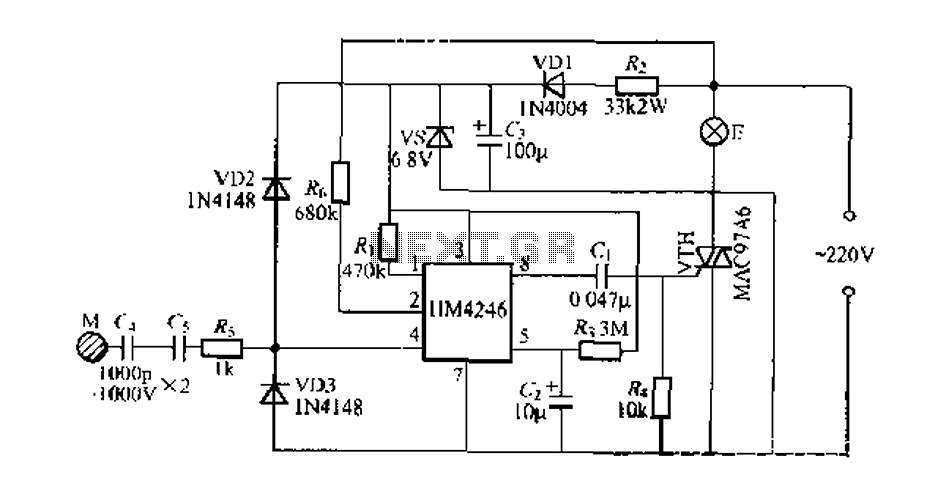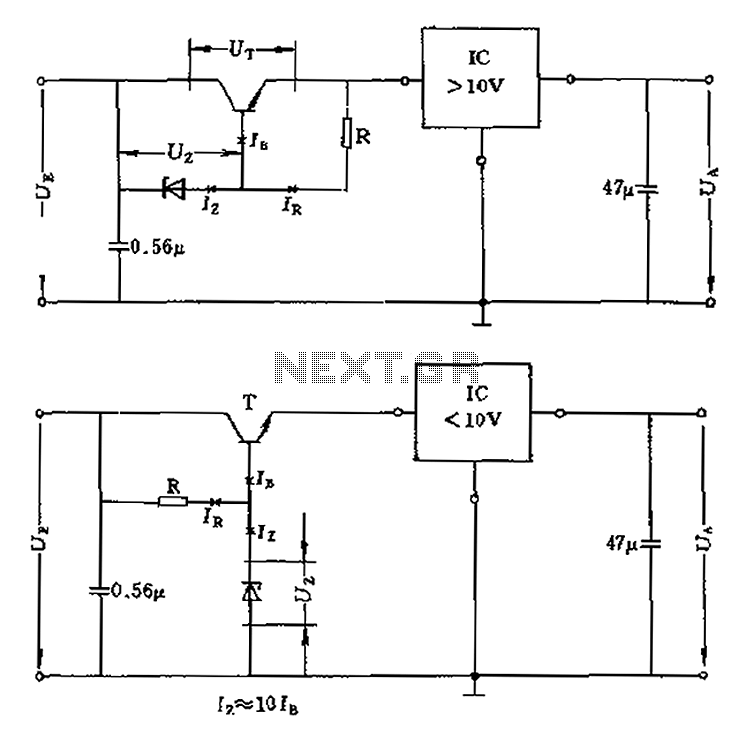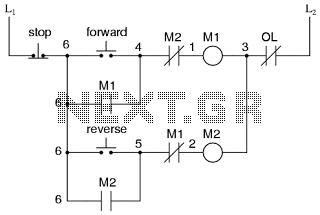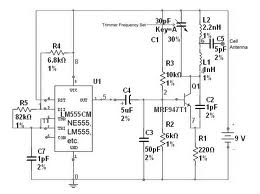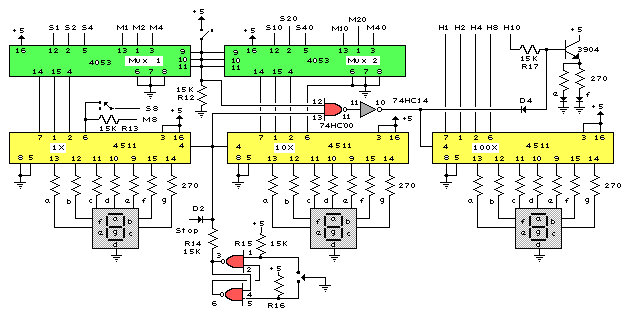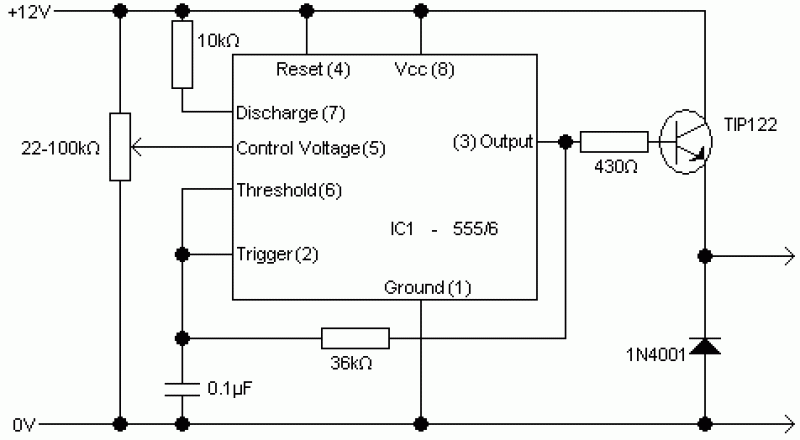
Direct start without power compensation circuit
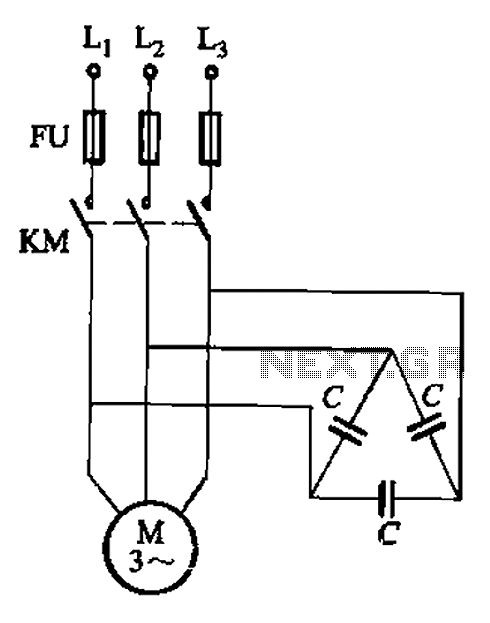
Asynchronous motor reactive power compensation involves directly connecting a capacitor to the stator windings of the asynchronous motor to enhance its power factor. This method is particularly effective for synchronous motors, as it reduces energy consumption related to reactive power. It is suitable for large capacity units (10 kW and above) and is effective for long-running asynchronous electric motors that are located at a distance from the power source. Reactive power compensation for asynchronous motors requires protection against over-voltage and self-excitation. The capacitance compensation must be calculated using the formula: Q (0.7 to 0.9) * Ue * Io, where Ue is the rated motor voltage in volts, and Io is the no-load current of the motor in amperes. The circuit can operate without a power compensation circuit for direct starting, and it can also accommodate a series of frequency-sensitive rheostat starters for auto-decompression in situ reactive power compensation. Capacitors are directly connected to the motor terminals.
To implement asynchronous motor reactive power compensation, a capacitor bank is integrated into the motor circuit, ensuring that the reactive power demand is met without drawing excessive power from the supply. This setup not only improves the motor's efficiency but also minimizes losses associated with reactive power. The capacitor bank should be selected based on the motor's specifications, particularly the rated voltage and no-load current, to ensure optimal performance.
In practice, the capacitor bank can be connected in parallel with the motor's stator windings. The selection of capacitance values must be calculated carefully, considering the operational parameters of the motor and the desired power factor correction. The typical range for the reactive power compensation factor (Q) is between 0.7 and 0.9, aligning with the motor's operational characteristics.
Protection measures are essential to safeguard the motor and capacitor bank from voltage spikes and self-excitation conditions. Over-voltage protection devices, such as surge protectors or voltage relays, should be included in the circuit design. Additionally, the use of a frequency-sensitive rheostat can facilitate a smooth start-up of the motor, particularly in applications where load conditions vary significantly.
In summary, the integration of reactive power compensation for asynchronous motors enhances operational efficiency, reduces energy consumption, and requires careful consideration of capacitor selection and protective measures to ensure reliable performance. Asynchronous motor reactive power compensation on the spot, is the capacitor directly connected with the asynchronous motor stator windings connected to increase the power of a synchronous motor is running due to the number, to reduce the energy consumption of a reactive power compensation. It is suitable for large unit capacity (lOkW above), long-running, asynchronous electric power from the distant motives.
Reactive Power Compensation for asynchronous motor must be protected against over-voltage generated and self-motivation. Capacitance compensation should be under selection formula: Q (0- 7 ~ 0 9.) brother Uefo (var) where Ue - rated motor voltage, V; IO- motor no-load current.
A. (1) Direct start without power compensation circuit circuit is shown. The circuit can also be used to start or auto decompression rotor series frequency sensitive rheostat starting in situ reactive power compensation. And directly connected to the capacitor leads to the motor terminals.
To implement asynchronous motor reactive power compensation, a capacitor bank is integrated into the motor circuit, ensuring that the reactive power demand is met without drawing excessive power from the supply. This setup not only improves the motor's efficiency but also minimizes losses associated with reactive power. The capacitor bank should be selected based on the motor's specifications, particularly the rated voltage and no-load current, to ensure optimal performance.
In practice, the capacitor bank can be connected in parallel with the motor's stator windings. The selection of capacitance values must be calculated carefully, considering the operational parameters of the motor and the desired power factor correction. The typical range for the reactive power compensation factor (Q) is between 0.7 and 0.9, aligning with the motor's operational characteristics.
Protection measures are essential to safeguard the motor and capacitor bank from voltage spikes and self-excitation conditions. Over-voltage protection devices, such as surge protectors or voltage relays, should be included in the circuit design. Additionally, the use of a frequency-sensitive rheostat can facilitate a smooth start-up of the motor, particularly in applications where load conditions vary significantly.
In summary, the integration of reactive power compensation for asynchronous motors enhances operational efficiency, reduces energy consumption, and requires careful consideration of capacitor selection and protective measures to ensure reliable performance. Asynchronous motor reactive power compensation on the spot, is the capacitor directly connected with the asynchronous motor stator windings connected to increase the power of a synchronous motor is running due to the number, to reduce the energy consumption of a reactive power compensation. It is suitable for large unit capacity (lOkW above), long-running, asynchronous electric power from the distant motives.
Reactive Power Compensation for asynchronous motor must be protected against over-voltage generated and self-motivation. Capacitance compensation should be under selection formula: Q (0- 7 ~ 0 9.) brother Uefo (var) where Ue - rated motor voltage, V; IO- motor no-load current.
A. (1) Direct start without power compensation circuit circuit is shown. The circuit can also be used to start or auto decompression rotor series frequency sensitive rheostat starting in situ reactive power compensation. And directly connected to the capacitor leads to the motor terminals.
Warning: include(partials/cookie-banner.php): Failed to open stream: Permission denied in /var/www/html/nextgr/view-circuit.php on line 713
Warning: include(): Failed opening 'partials/cookie-banner.php' for inclusion (include_path='.:/usr/share/php') in /var/www/html/nextgr/view-circuit.php on line 713
